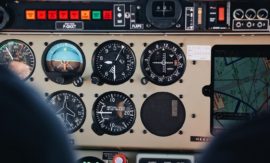Intended learning outcomes: Describe the issuance of accompanying documents for production. Explain operations scheduling, dispatching, and finite forward scheduling. Present sequencing methods.
Shop floor control comprises the essential functions of production order processing, dispatching and sequencing, order coordination, and shop floor data collection (work-in-process, order progress checking, actual use of resources, performance indicators such as inventory turnover, work center efficiency, and capacity utilization).
Production activity control (PAC) is a more generalized term, including also supplier control. See here also [BaBr94].
A manufacturing execution system (MES) is the corresponding IT-supported information system that manages production in factories. It supports all functions described in this section as well as in Section 15.3.
Course section 15.2: Subsections and their intended learning outcomes

15.2 Shop Floor Control — Production Activity Control (PAC) — Manufacturing Execution System (MES)
Intended learning outcomes: Describe the issuance of accompanying documents for production. Explain operations scheduling, dispatching, and finite forward scheduling. Present sequencing methods.

15.2.1 Issuance of Accompanying Documents for Production
Intended learning outcomes: For a production order, identify the shop packet. Describe shop order routing, operation card, parts requisitions and picking list.

15.2.2 Operations Scheduling, Dispatching, and Finite Forward Scheduling
Intended learning outcomes: Produce an overview on Operations scheduling and dispatching. Explain finite forward scheduling.

15.2.2b The Planning Board and the (Electronic) Control Board (Leitstand)
Intended learning outcomes: Describe the loading of production resources in the form of a planning board before and after a new entry to orders on hand. Identify the (electronic) control board (Leitstand).

15.2.3 Sequencing Methods
Intended learning outcomes: Explain sequencing and its objectives.
Course 15: Sections and their intended learning outcomes

Course 15 – Order Release and Control
Intended learning outcomes: Differentiate various techniques for order release. Explain in detail shop floor control. Present methods and techniques used for order monitoring and shop floor data collection. Describe distribution control.

15.1 Order Release
Intended learning outcomes: Describe order proposals for production and procurement as well as order release. Explain load-oriented order release (Loor) and capacity-oriented materials management (Corma).

15.2 Shop Floor Control — Production Activity Control (PAC) — Manufacturing Execution System (MES)
Intended learning outcomes: Describe the issuance of accompanying documents for production. Explain operations scheduling, dispatching, and finite forward scheduling. Present sequencing methods.

15.3 Order Monitoring and Shop Floor Data Collection
Intended learning outcomes: Describe recording issues of goods from stock and completed operations. Produce an overview on progress checking, quality control, report of order termination, and automatic and rough-cut data collection.

15.4 Distribution Control
Intended learning outcomes: Explain order picking, packaging, load building, and transportation to receiver.

15.5 Summary
.

15.6 Keywords
.

15.7 Scenarios and Exercises
Intended learning outcomes: Calculate examples for load-oriented order release (Loor) and for finite forward scheduling. Assess characteristics of capacity-oriented materials management (Corma) and of order Picking.
